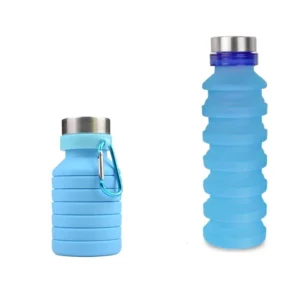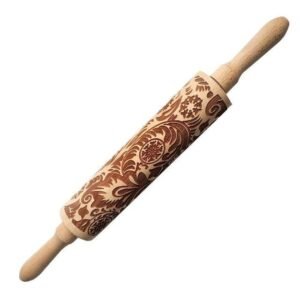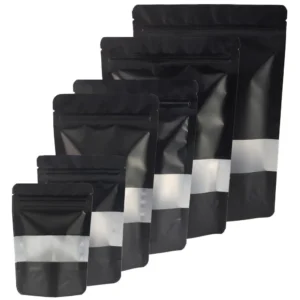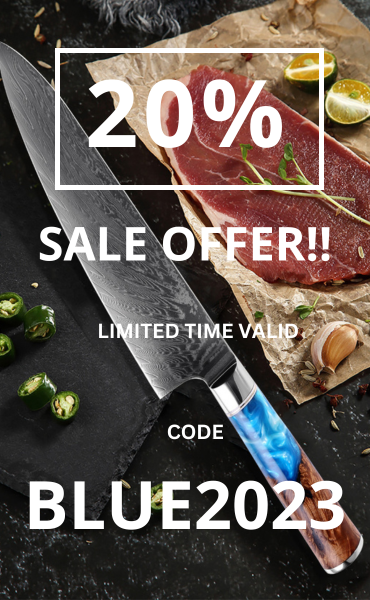Introduction
The Essence of a Quality Kitchen Knife Set
A kitchen knife set is not merely a collection of cutting tools; it’s a pivotal ensemble that can elevate your culinary journey. The essence of a quality kitchen knife set lies in its ability to offer versatility, precision, and ease in various cooking tasks. From dicing vegetables to carving meats, a well-curated set ensures that you have the right tool for every job, enhancing efficiency and output in the kitchen.

The Impact of the Right Tools in Culinary Arts
The influence of utilizing the right tools, especially a stellar kitchen knife set, in culinary arts is profound. Employing a top-tier set, ensures chefs can execute cuts with precision, maintaining the integrity of ingredients and enhancing dish presentation. Moreover, the right tools streamline food preparation, elevating the overall culinary experience by amalgamating efficiency with exemplary results, thereby underscoring the pivotal role of quality in a kitchen knife set.
The Anatomy of a Kitchen Knife Set
Essential Knives Every Cook Should Have
A kitchen knife set is incomplete without its quintessential components, each designed to perform specific tasks with utmost precision.
- Chef’s Knife: The backbone of any kitchen knife set, a chef’s knife, is versatile, handling tasks from chopping vegetables to slicing meats with ease.
- Paring Knife: Ideal for peeling and other small-scale tasks, a paring knife offers control and accuracy in every slice.
- Serrated Knife: Essential for slicing through bread or tomatoes, the serrated knife ensures clean cuts without damaging delicate items.
| Knife Type | Primary Use | Length (inches) |
|---|---|---|
| Chef’s Knife | Chopping, Slicing | 8 – 10 |
| Paring Knife | Peeling, Trimming | 3 – 4 |
| Serrated Knife | Slicing Bread, Tomatoes | 5 – 10 |
Understanding Knife Construction
Delving into the construction of a kitchen knife set reveals the craftsmanship and technology that dictate its performance and durability.
- European vs. Japanese Styles: European knives, often boast a robust and heavy build, while Japanese styles are known for their lightweight and sharp precision.
- Forged vs. Stamped Knives: Forged knives offer a hefty and balanced feel, while stamped knives are lighter and more affordable, each serving different preferences in the kitchen.
Importance of Material and Build Quality
The material and build quality of a kitchen knife set are paramount, directly influencing its longevity, performance, and user experience. High-carbon stainless steel is often revered for its balance of sharpness and corrosion resistance, ensuring that the knives not only perform exceptionally but also stand the test of time. The build quality, including the handle design, balance, and knife weight, further enhances the ergonomic and efficient use of the set in various culinary applications.
Exploring Top Kitchen Knife Sets
Criteria for Selecting a Knife Set
When embarking on the journey to select the best kitchen knife set, it’s pivotal to consider various aspects that cater to your culinary needs and preferences. The Damascus Chef Knife, for instance, has garnered acclaim for its adept ability to slice through meat and delicate items, while also being a proficient tool for chopping vegetables, thanks to its wide, approximately 7-inch long blade, which is curved and sharpened on both sides.
Material and Durability
The material of the knives plays a crucial role in determining their longevity and functionality. While stainless steel is a common choice for its ability to retain sharpness, ceramic blades have been gaining popularity for their lightweight and ultra-sharp edges. The Damascus Kitchen Knife Sets, for example, blend aesthetic appeal with high functionality, making them a sought-after choice among both professional chefs and home cooks.
Style and Ergonomics
The style of the knife, whether it leans towards Japanese precision or the robustness of European designs, should align with your cooking style and what you find comfortable to use. Ergonomics, ensuring the handle and weight of the knife feel right in your hand, is paramount to prevent strain and facilitate smooth, efficient cuts.
Pros and Cons of Prepackaged Sets
Prepackaged knife sets, such as the Professional Serbian Boning Knife, can offer a convenient solution, providing a range of tools that cater to various culinary tasks. However, it’s essential to weigh the advantages, like having a cohesive set and often a matching storage solution, against potential downsides, such as the inclusion of knives that might not cater to your specific needs.
Versatility vs. Necessity
While a set might offer an array of knives, from a chef’s knife to a paring knife, it’s vital to consider whether each piece will be utilized in your cooking adventures. Sometimes, the allure of a comprehensive set might overshadow the practicality of having knives that cater specifically to your culinary repertoire.
Quality and Investment
Investing in a set where each knife is of high quality and serves a purpose in your kitchen is pivotal. Brands like Henckels, Wusthof, and Morphy Richards have established a reputation in the market, but exploring and finding what aligns with your needs, such as the sharpness of Damascus Knives, will ensure that your investment is sound and fruitful in your culinary endeavors.
What to Look for When Buying A Kitchen Knife Set?
When buying a kitchen knife set, there are several factors to consider to ensure quality and make a wise investment.
Firstly, it is important to look for knives that are made of high-quality materials such as stainless steel or carbon steel. These materials are durable and resistant to rust and corrosion, ensuring that your knives will last for a long time.
Additionally, consider the construction of the knives. Look for full tang knives, where the blade extends all the way through the handle, as they tend to be stronger and more balanced.
Another aspect to consider is the type of knife included in the set. Look for a variety of knives that cover different purposes, such as a chef’s knife, paring knife, serrated knife, and utility knife. This will ensure that you have the right tool for every task in the kitchen.
Lastly, consider the overall design and comfort of the knives. Look for handles that are ergonomic and comfortable to hold, as this will make your cutting experience more enjoyable and reduce the risk of accidents.
By considering these factors, you can make an informed decision when buying a kitchen knife set that offers both quality and value for your investment.
Are Knife Sets Suitable for Beginners?
When it comes to starting out in the world of cooking, having the right tools is essential. And one of the most important tools in any kitchen is a good set of knives. But are knife sets suitable for beginners?
The answer to that question depends on a few factors. First and foremost, it’s important to consider the skill level and experience of the beginner. For someone who is just starting out and has little to no experience with cooking, a knife set can be a great option. It provides a variety of knives that can be used for different tasks, allowing the beginner to practice and learn different cutting techniques.
Additionally, a knife set often comes with a knife block or storage case, which helps to keep the knives organized and protected. This can be especially helpful for beginners who may not have a designated space for their knives in the kitchen.
However, it’s also worth noting that not all knife sets are created equal. Some sets may include knives that are of lower quality or not suited for certain tasks. It’s important for beginners to do their research and choose a knife set that is well-made and includes the essential knives they will need.
Knife sets can be suitable for beginners, as they provide a variety of knives and storage options. However, it’s important for beginners to choose a high-quality set that includes the necessary knives for their cooking needs. With the right knife set, beginners can start their culinary journey with confidence and the right tools for the job.
Lightweight Knife Set for Beginners
Finding the right knife set can be a daunting task, especially for beginners and professionals alike. That’s why we’ve curated a list of lightweight knife sets that are perfect for both skill levels. These sets are designed to provide a comfortable and effortless cutting experience, making them ideal for those who are just starting their culinary journey or those who are already seasoned chefs.
No matter which set you choose, rest assured that these lightweight knife sets are perfect for beginners and pros alike. So, upgrade your kitchen arsenal with these versatile and durable knives and take your culinary skills to the next level.
How do I Know Which Knife Set is Best for Me?
To find the best knife set for you, it’s worth asking yourself: What type of cook are you these days? If you’re new to the kitchen, a chef’s knife set will be your go-to. The most important knives in any cook’s kitchen are a chef’s knife, a bread knife, and a paring knife. If you’re missing any of these blades, look for a chef’s knife set like a 3-Piece Starter Knife Set or a 5-Piece Chef’s Knife Set.
Maintenance and Care of Kitchen Knives

Ensuring the longevity and optimal performance of your kitchen knives involves dedicated maintenance and care. From storage to sharpening and cleaning, each aspect plays a crucial role in preserving the quality and efficacy of your knives.
Proper Storage Solutions
Proper storage of a kitchen knife set is paramount to maintaining its sharpness and preventing unnecessary wear. Utilizing a knife block, magnetic strip, or specialized knife case can safeguard the blades from damage and protect users from accidental injuries. Ensuring that each knife has a designated, secure spot prevents blade contact, preserving their sharpness and structural integrity.
Sharpening and Honing Techniques
Maintaining the sharpness of your kitchen knives involves regular sharpening and honing. While sharpening removes material from the blade to reinstate its edge, honing realigns the edge without removing material. Utilizing a honing rod for regular maintenance and a whetstone or specialized knife sharpener for periodic sharpening ensures that your knives offer peak performance, providing clean, precise cuts and reducing the effort needed in food preparation.
Cleaning and Preserving Knife Quality
Ensuring the longevity of your kitchen knife set involves meticulous cleaning and preservation of knife quality. Hand washing knives with mild detergent, avoiding abrasive scrubbers, and promptly drying them prevents corrosion and maintains the quality of the blade and handle. Regularly oiling wooden handles and occasionally applying mineral oil to the blade, especially for carbon steel knives, can further preserve their appearance and function, ensuring that your kitchen knives remain in pristine condition throughout their service life.
How Long Does A Kitchen Knife Set Last?
A kitchen knife set can last for many years if it is properly cleaned and preserved. The lifespan of a knife set depends on various factors such as the quality of the knives, how often they are used, and how well they are maintained.
High-quality knives that are made from durable materials can last for decades if they are taken care of properly. On the other hand, lower-quality knives may need to be replaced more frequently. To ensure the longevity of your kitchen knife set, it is important to clean them after each use and store them properly. Cleaning the knives involves handwashing them with warm soapy water and drying them thoroughly before storing them. It is also recommended to avoid using abrasive materials or harsh chemicals that can damage the blades.
Storing the knives in a knife block or a knife magnet is a good way to protect the blades from getting dull or damaged. Additionally, it is important to regularly sharpen the knives to maintain their cutting performance. Using a knife sharpener or honing rod can help keep the blades sharp and extend their lifespan. By following these cleaning and preserving practices, you can ensure that your kitchen knife set lasts for a long time.
Conclusion
Navigating through the myriad of options in selecting the perfect kitchen knife set can be a daunting task. However, understanding the nuances of various knives, their construction, and the materials used in their making can significantly streamline the selection process, ensuring that you invest in a set that not only meets but enhances your culinary adventures.
The journey doesn’t end with the selection of a kitchen knife set. Ensuring that each piece is meticulously maintained, from its sharpness to its storage and cleaning, is pivotal in preserving its quality and longevity. Employing proper sharpening and honing techniques, adhering to optimal storage solutions, and ensuring that each knife is cleaned and preserved to maintain its quality are all integral aspects of owning a kitchen knife set.
FAQs
How to choose between Japanese and European knife styles?
Selecting between Japanese and European styles in a kitchen knife set hinges on your culinary needs and cutting techniques. Japanese knives, renowned for their precision and lightweight design, are optimal for delicate, precise cuts, while the typically heftier European knives offer robustness for diverse chopping tasks.
What is the optimal number of pieces in a kitchen knife set for a home cook?
For a home cook, a kitchen knife set with three to five pieces is often optimal, providing versatility without excess. Essential knives typically include a chef’s knife, a paring knife, and a serrated knife, covering a wide array of culinary tasks without overwhelming your kitchen space.
How often should kitchen knives be sharpened?
Kitchen knives should be sharpened every few months under regular use to maintain optimal performance. However, honing with a rod should be performed more frequently, potentially after every use, to keep the edge aligned and ensure clean, precise cuts in your culinary endeavors.
What are the safety protocols for using and storing kitchen knives?
Safety protocols for using and storing kitchen knives include ensuring knives are stored securely in a block or magnetic strip, keeping them out of reach of children, and ensuring they are kept sharp, as dull knives require more force and can slip. Always cut on stable surfaces and store knives away from other utensils to preserve their sharpness and prevent accidental injury.
Frequently Linked Pages
1. Damascus Kitchen Knives Set – The Ultimate Guide to Damascus Kitchen Knives Set
2. Damascus Kitchen Knife Set – Unveiling the Art and Precision of a Damascus Kitchen Knife Set in Your Culinary Journey
3. Kitchen Knives – Mastering the Cut: A Comprehensive Guide to Kitchen Knives












